Digital-Twin-Based High-Precision Assembly of a Steel Bridge Tower
Abstract
1. Introduction
2. Literature Review
2.1. Steel Assembly
2.2. 3D Reconstruction
2.3. Position Tracking
2.4. Dynamic Pose Control
2.5. Research Gaps
3. Methodology
3.1. Deformation Detection
3.2. Pose Estimation and Optimization
3.3. Deformation Correction and Pose Control
4. Case Study
5. Conclusions
Author Contributions
Funding
Data Availability Statement
Acknowledgments
Conflicts of Interest
References
- Fu, F. Design and Analysis of Complex Structures. In Design and Analysis of Tall and Complex Structures; Elsevier: Amsterdam, The Netherlands, 2018; pp. 177–211. [Google Scholar] [CrossRef]
- Gao, S.B.; Usami, T.; Ge, H.B. Ductility Evaluation of Steel Bridge Piers with Pipe Sections. J. Eng. Mech.-Asce 1998, 124, 260–267. [Google Scholar] [CrossRef]
- Bruneau, M.; Uang, C.M.; Sabelli, R. Ductile Design of Steel Structures, 2nd ed.; McGraw-Hill: New York, NY, USA, 2011. [Google Scholar]
- Wu, L.L.; Gao, G.; Ye, B.R.; Zhang, H.D.; Lu, Q. Analysis on accumulated deformation and stress of the steel roof of Beijing Opera House during construction. J. Phys. Conf. Ser. 2021, 2045, 012014. [Google Scholar] [CrossRef]
- Sun, B.; He, H.; Wu, C.G.; Cao, J.H.; Wu, B.; Hao, Y.P. The Advantages of All-steel Structure Versus Concrete Structure. Constr. Technol. 2017, 46, 445–447. [Google Scholar]
- Raoul, J. Use and Application of High-Performance Steels for Steel Structures; IABSE: Zurich, Switzerland, 2005. [Google Scholar]
- Gao, W.B.; Zhang, J.W.; Su, Q.K.; Liu, J.Z. Practice and Considerations on Steel Structure Meanufacturing of Hong Kong-Zhuhai-Macao Bridge. Steel Constr. 2021, 36, 1–23. [Google Scholar]
- Chen, Y. Review on Construction Technology of Tunnel and Artificial Islands for Hong Kong-Zhuhai-Maco Bridge. Constr. Technol. 2013, 42, 1–5. [Google Scholar]
- Jatmiko, J.; Psimoulis, P. Deformation Monitoring of a Steel Structure Using 3D Terrestrial Laser Scanner (TLS). In Proceedings of the 24th International Workshop on Intelligent Computing in Engineering, Nottingham, UK, 10–12 July 2017. [Google Scholar]
- Ezpeleta, I.; Pujana, U.; Isasa, I.; Ayerbe, J.; Justel, D. New design for assembly (DfA) methodology for large and heavy parts assembled on site. Procedia CIRP 2021, 100, 145–150. [Google Scholar] [CrossRef]
- Chen, Z.; Ge, H.; Chan, S. Modelling, Test and Practice of Steel Structures. Metals 2022, 12, 1212. [Google Scholar] [CrossRef]
- Fernández-Mora, V.; Navarro, I.J.; Yepes, V. Integration of the structural project into the BIM paradigm: A literature review. J. Build. Eng. 2022, 53, 104318. [Google Scholar] [CrossRef]
- 3-D Reconstruction—Latest Research and News|Nature. Available online: https://www.nature.com/subjects/3d-reconstruction (accessed on 10 June 2022).
- Lin, J.R.; Hu, Z.Z.; Li, J.L.; Chen, L.M. Understanding On-Site Inspection of Construction Projects Based on Keyword Extraction and Topic Modeling. IEEE Access 2020, 8, 198503–198517. [Google Scholar] [CrossRef]
- Lin, J.R.; Zhang, J.P.; Zhang, X.Y.; Hu, Z.Z. Automating closed-loop structural safety management for bridge construction through multisource data integration. Adv. Eng. Softw. 2019, 128, 152–168. [Google Scholar] [CrossRef]
- Lin, J.R.; Wu, D.P. An approach to twinning and mining collaborative network of construction projects. Autom. Constr. 2021, 125, 103643. [Google Scholar] [CrossRef]
- Wang, H.W.; Lin, J.R.; Zhang, J.P. Work package-based information modeling for resource-constrained scheduling of construction projects. Autom. Constr. 2020, 109, 102958. [Google Scholar] [CrossRef]
- Hu, Z.Z.; Leng, S.; Lin, J.R.; Li, S.W.; Xiao, Y.Q. Knowledge Extraction and Discovery Based on BIM: A Critical Review and Future Directions. Arch. Comput. Methods Eng. 2022, 29, 335–356. [Google Scholar] [CrossRef]
- Lin, C.; Hu, Z.Z.; Yang, C.; Deng, Y.C.; Zheng, W.; Lin, J.R. Maturity Assessment of Intelligent Construction Management. Buildings 2022, 12, 1742. [Google Scholar] [CrossRef]
- Ping, S. The Steel Structural Design And Installation of Spherically Tubed Steel Structure Net Frame System of 27,540 m China Beijing Four Unit irplane Storehouse Project. J. Constr. Steel Res. 1998, 183, 13. [Google Scholar]
- Specifications for Erection of Structural Steel. Available online: https://www.gov.mb.ca/mit/contracts/pdf/manual/1061.pdf (accessed on 1 November 2022).
- Xie, H.Y.; Shi, W.; Issa, R.R.A. Implementation of BIM/RFID in computer-aided design-manufacturing-installation process. In Proceedings of the 2010 3rd International Conference on Computer Science and Information Technology, Chengdu, China, 9–11 July 2010; Volume 2, pp. 107–111. [Google Scholar] [CrossRef]
- Case, F.; Beinat, A.; Crosilla, F.; Alba, I.M. Virtual trial assembly of a complex steel structure by Generalized Procrustes Analysis techniques. Autom. Constr. 2014, 37, 155–165. [Google Scholar] [CrossRef]
- Zheng, Z.; Liao, W.J.; Lin, J.R.; Zhou, Y.C.; Zhang, C.; Lu, X.Z. Digital Twin-Based Investigation of a Building Collapse Accident. Adv. Civ. Eng. 2022, 2022, e9568967. [Google Scholar] [CrossRef]
- Steger, C.; Ulrich, M.; Wiedemann, C. Machine Vision Algorithms and Applications; John Wiley & Sons: Hoboken, NJ, USA, 2018. [Google Scholar]
- Dai, F.; Rashidi, A.; Brilakis, I.; Vela, P. Comparison of Image-Based and Time-of-Flight-Based Technologies for Three-Dimensional Reconstruction of Infrastructure. J. Constr. Eng. Manag. 2013, 139, 69–79. [Google Scholar] [CrossRef]
- Ma, Z.L.; Liu, S. A review of 3D reconstruction techniques in civil engineering and their applications. Adv. Eng. Inform. 2018, 37, 163–174. [Google Scholar] [CrossRef]
- Aharchi, M.; Kbir, M.A. A Review on 3D Reconstruction Techniques from 2D Images. In The Proceedings of the Third International Conference on Smart City Applications; Springer: Cham, Switzerland, 2020; pp. 510–522. [Google Scholar]
- Tang, P.B.; Huber, D.; Akinci, B.; Lipman, R.; Lytle, A. Automatic reconstruction of as-built building information models from laser-scanned point clouds: A review of related techniques. Autom. Constr. 2010, 19, 829–843. [Google Scholar] [CrossRef]
- Ham, H.; Wesley, J.; Hendra, H. Computer Vision Based 3D Reconstruction: A Review. Int. J. Electr. Comput. Eng. 2019, 9, 2394–2402. [Google Scholar] [CrossRef]
- Lu, Q.C.; Lee, S. Image-Based Technologies for Constructing As-Is Building Information Models for Existing Buildings. J. Comput. Civ. Eng. 2017, 31, 04017005. [Google Scholar] [CrossRef]
- Pärn, E.A.; Edwards, D. Vision and advocacy of optoelectronic technology developments in the AECO sector. Built Environ. Proj. Asset Manag. 2017, 7, 330–348. [Google Scholar] [CrossRef]
- Son, H.; Bosché, F.; Kim, C. As-built data acquisition and its use in production monitoring and automated layout of civil infrastructure: A survey. Adv. Eng. Inform. 2015, 29, 172–183. [Google Scholar] [CrossRef]
- Teizer, J. Status quo and open challenges in vision-based sensing and tracking of temporary resources on infrastructure construction sites. Adv. Eng. Inform. 2015, 29, 225–238. [Google Scholar] [CrossRef]
- Koch, C.; Georgieva, K.; Kasireddy, V.; Akinci, B.; Fieguth, P. A review on computer vision based defect detection and condition assessment of concrete and asphalt civil infrastructure. Adv. Eng. Inform. 2015, 29, 196–210. [Google Scholar] [CrossRef]
- Zeibak-Shini, R.; Sacks, R.; Ma, L.; Filin, S. Towards generation of as-damaged BIM models using laser-scanning and as-built BIM: First estimate of as-damaged locations of reinforced concrete frame members in masonry infill structures. Adv. Eng. Inform. 2016, 30, 312–326. [Google Scholar] [CrossRef]
- Wang, Q.; Kim, M.K.; Cheng, J.C.P.; Sohn, H. Automated quality assessment of precast concrete elements with geometry irregularities using terrestrial laser scanning. Autom. Constr. 2016, 68, 170–182. [Google Scholar] [CrossRef]
- Monserrat, O.; Crosetto, M. Deformation measurement using terrestrial laser scanning data and least squares 3D surface matching. ISPRS J. Photogramm. Remote Sens. 2008, 63, 142–154. [Google Scholar] [CrossRef]
- Measurement Technologies for Precision Positioning|Elsevier Enhanced Reader. Available online: https://reader.elsevier.com/reader/sd/pii/S0007850615001481?token=3789BCB632B9A25EBA00647ABB365FF648892E21FF7D932A08C544B38371A91BA9A27C699E6CFBA14CBCF0A6D92FCA47&originRegion=us-east-1&originCreation=20221111051341 (accessed on 11 November 2022).
- Hughes, B.; Forbes, A.; Lewis, A.; Sun, W.J.; Veal, D.; Nasr, K. Laser tracker error determination using a network measurement. Meas. Sci. Technol. 2011, 22, 045103. [Google Scholar] [CrossRef]
- Sahu, R.K. A review on application of laser tracker in precision positioning metrology of particle accelerators. Precis. Eng. 2021, 71, 232–249. [Google Scholar] [CrossRef]
- Baker, I.O. Engineers’ Surveying Instruments, Their Construction, Adjustment, and Use; John Wiley & Sons: Hoboken, NJ, USA, 1892. [Google Scholar]
- Xie, M.L.; Ma, C.; Liu, K.; Liu, P.; Hao, W.; Han, J.F.; Huang, W.; Lian, X.Z.; Feng, X.B.; Jing, F. The application of active polarization imaging technology of the vehicle theodolite. Opt. Commun. 2019, 433, 74–80. [Google Scholar] [CrossRef]
- Zhao, G.; Zhang, C.Y.; Jing, X.H.; Ling, X.Z.; Chen, S.Y. Study on the Technologies of Close Range Photogrammetry and Applications in the Manufacture of Aviation. In Proceedings of the 2018 8th International Conference on Manufacturing Science and Engineering (ICMSE 2018), Venice, Italy, 4–8 June 2018; pp. 480–487. [Google Scholar] [CrossRef]
- Strząbała, K.; Ćwiąkała, P.; Gruszczyński, W.; Puniach, E.; Matwij, W. Determining changes in building tilts based on UAV photogrammetry. Measurement 2022, 202, 111772. [Google Scholar] [CrossRef]
- Diekman, J.; Krewedl, M.; Stewart, T.; Won, S. Application of Lean manufacturing Principles to Construction; Technical Report 191-11; The University of Texas at Austin, Construction Industry Institute: Austin, TX, USA, 2004. [Google Scholar]
- Wang, Y.G.; He, X.J.; He, J.; Fan, C. Virtual trial assembly of steel structure based on BIM platform. Autom. Constr. 2022, 12, 104395. [Google Scholar] [CrossRef]
- Deng, H.; Xu, Y.W.; Deng, Y.C.; Lin, J.R. Transforming knowledge management in the construction industry through information and communications technology: A 15-year review. Autom. Constr. 2022, 142, 104530. [Google Scholar] [CrossRef]
- Zheng, Z.; Zhou, Y.C.; Lu, X.Z.; Lin, J.R. Knowledge-informed semantic alignment and rule interpretation for automated compliance checking. Autom. Constr. 2022, 142, 104524. [Google Scholar] [CrossRef]
- Song, S.Y.; Lin, J.R.; Zhou, Y.C.; Ding, W.Q. Parameterized FEA Model Generation and Simulation of Underground Structures Based on BIM: A Case Study. Comput. Civ. Eng. 2021, 408–416. [Google Scholar] [CrossRef]
- Zhu, C.Z.; Liu, Z.Q. The Analysis and Prevention Measures for Steel Structural Installation Error. Shanxi Archit. 2012, 38, 43. [Google Scholar] [CrossRef]
- Leng, J.W.; Chen, Z.Y.; Sha, W.N.; Lin, Z.S.; Lin, J.; Liu, Q. Digital twins-based flexible operating of open architecture production line for individualized manufacturing. Adv. Eng. Inform. 2022, 53, 101676. [Google Scholar] [CrossRef]
- Youn, J.H.; Wohn, K. Realtime collision detection for virtual reality applications. In Proceedings of IEEE Virtual Reality Annual International Symposium; IEEE: Piscataway, NJ, USA, 1993; pp. 415–421. [Google Scholar] [CrossRef]
- LCárdenas-Robledo, A.; Hernández-Uribe, Ó.; Reta, C.; Cantoral-Ceballos, J.A. Extended reality applications in industry 4.0.—A systematic literature review. Telemat. Inform. 2022, 73, 101863. [Google Scholar] [CrossRef]
- Li, L.; Hu, J.H. An Efficient Linear Detection Scheme Based on L-BFGS Method for Massive MIMO Systems. IEEE Commun. Lett. 2022, 26, 138–142. [Google Scholar] [CrossRef]
- Wang, J.; Deng, J.H.; Qiu, Y. Shaped reflector antenna design using large-scale BFGS. In Proceedings of the 2011 International Conference on Electronics, Communications and Control (ICECC), Ningbo, China, 9–11 September 2011; pp. 4509–4512. [Google Scholar] [CrossRef]
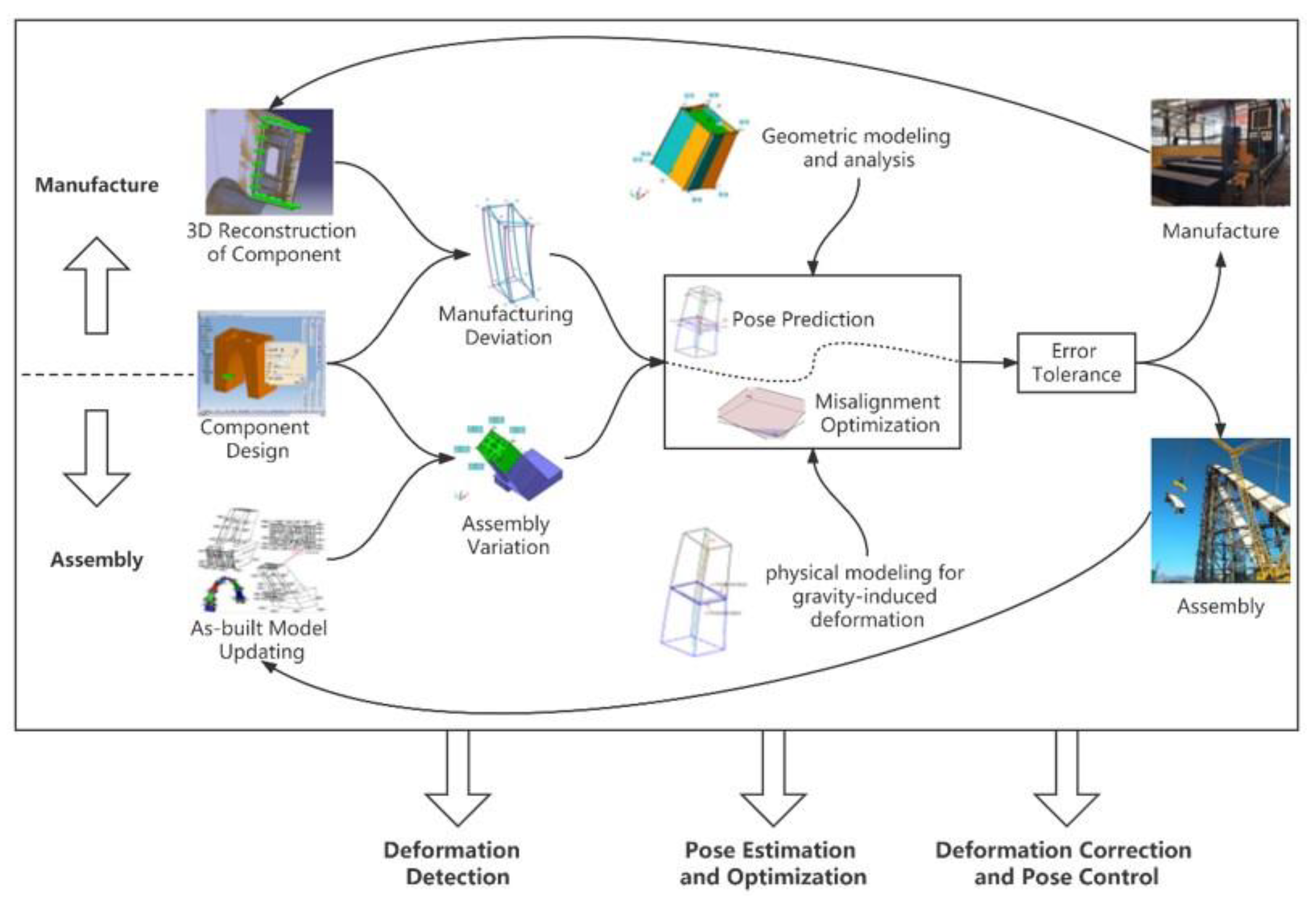
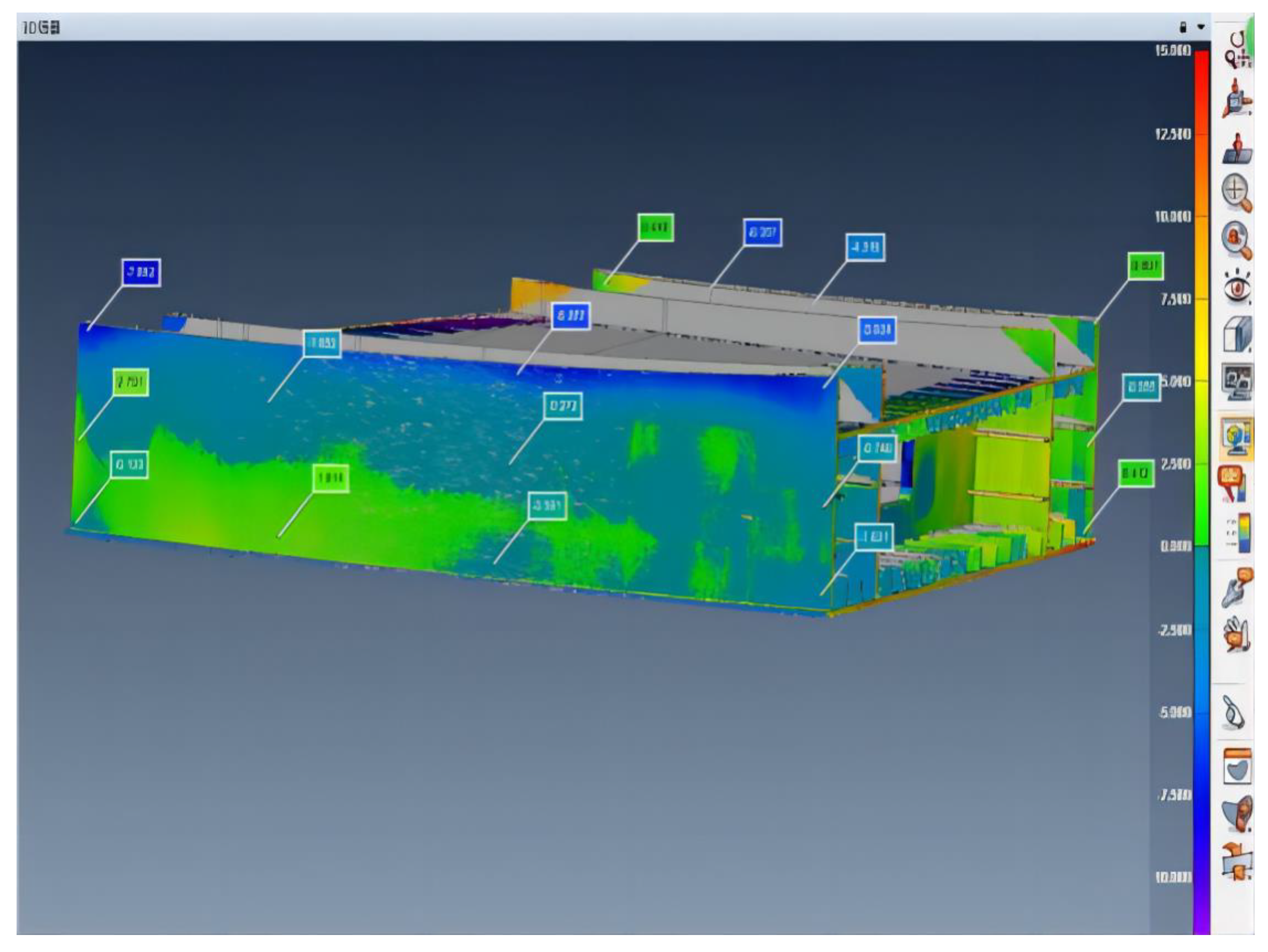
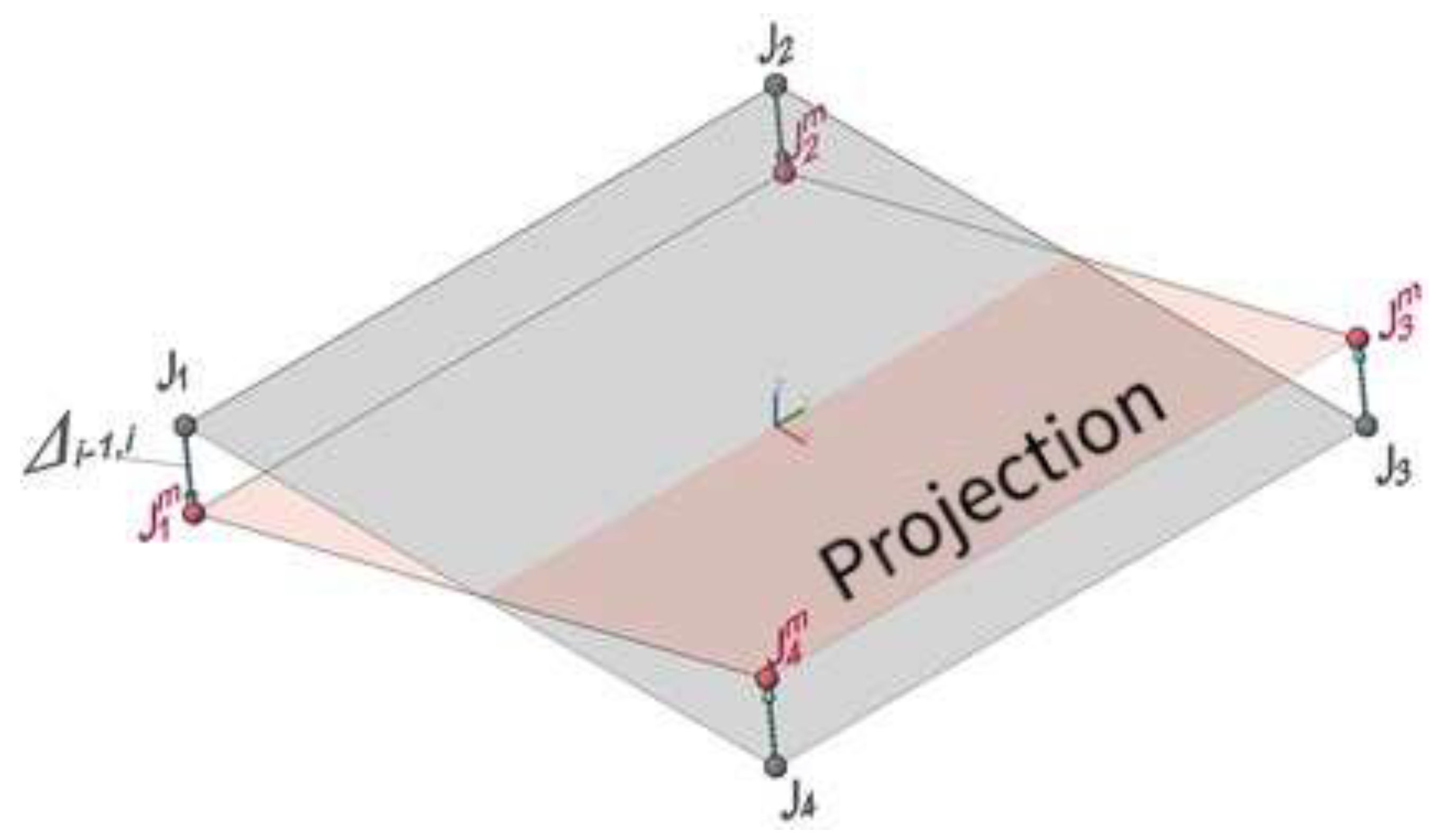
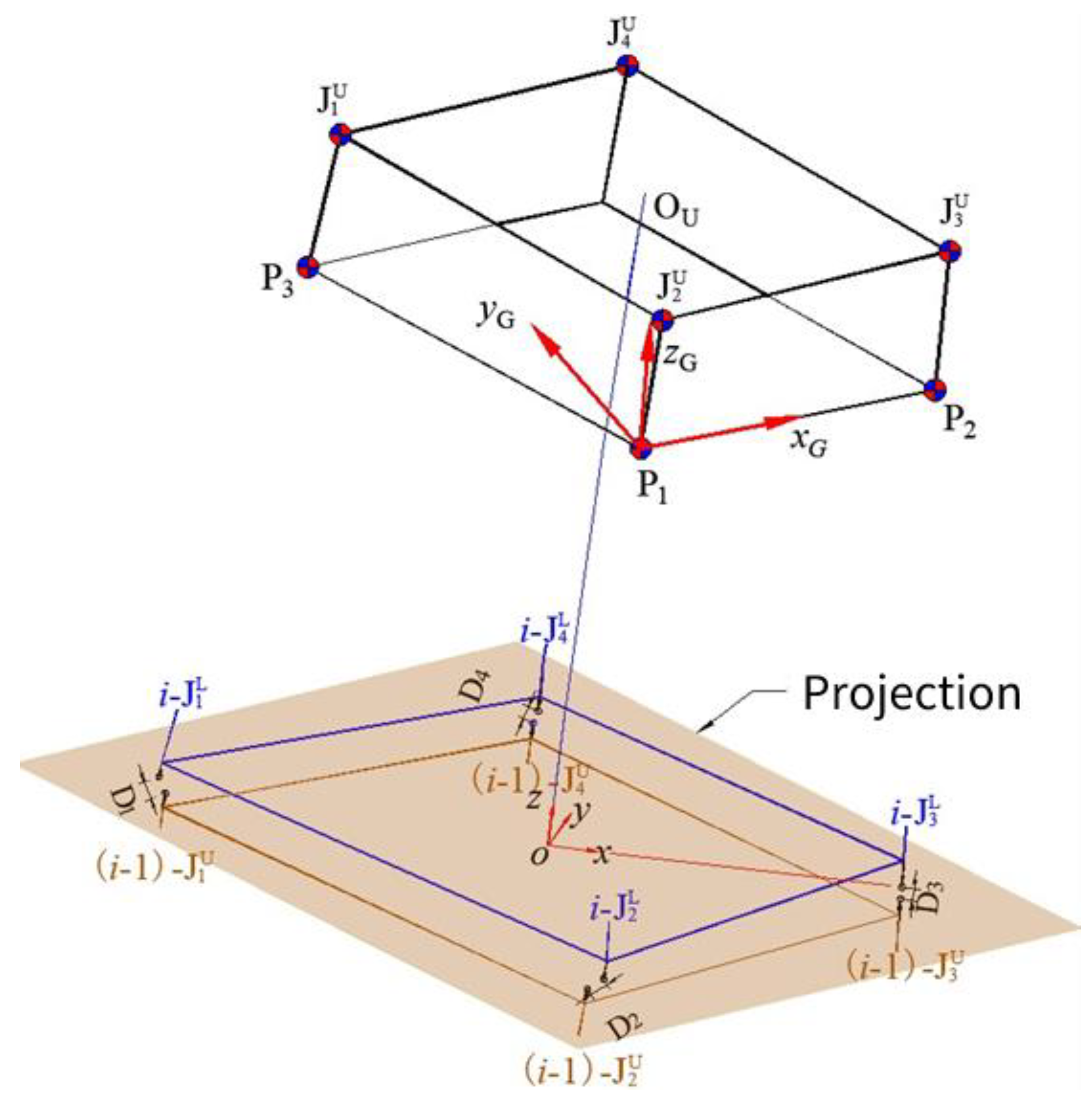

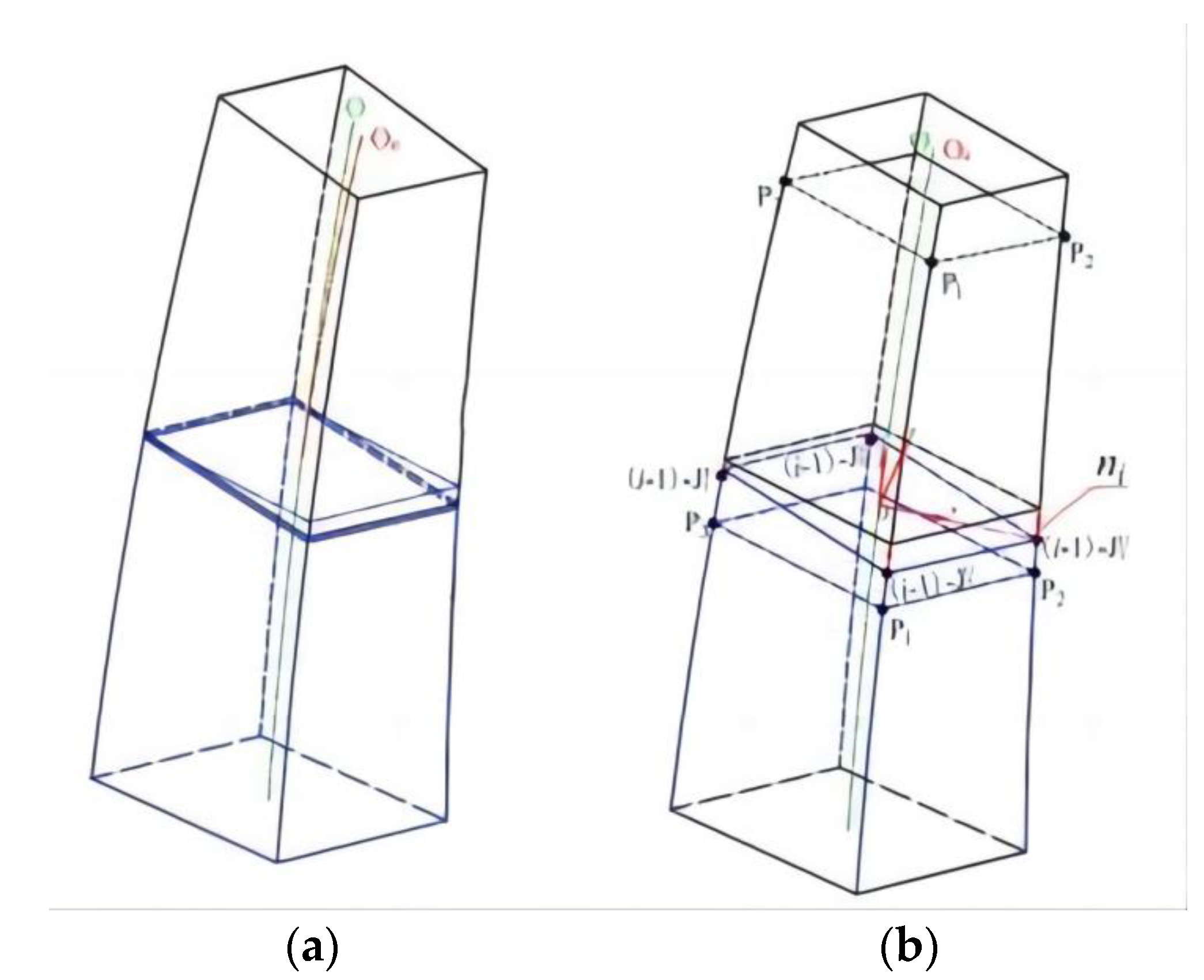
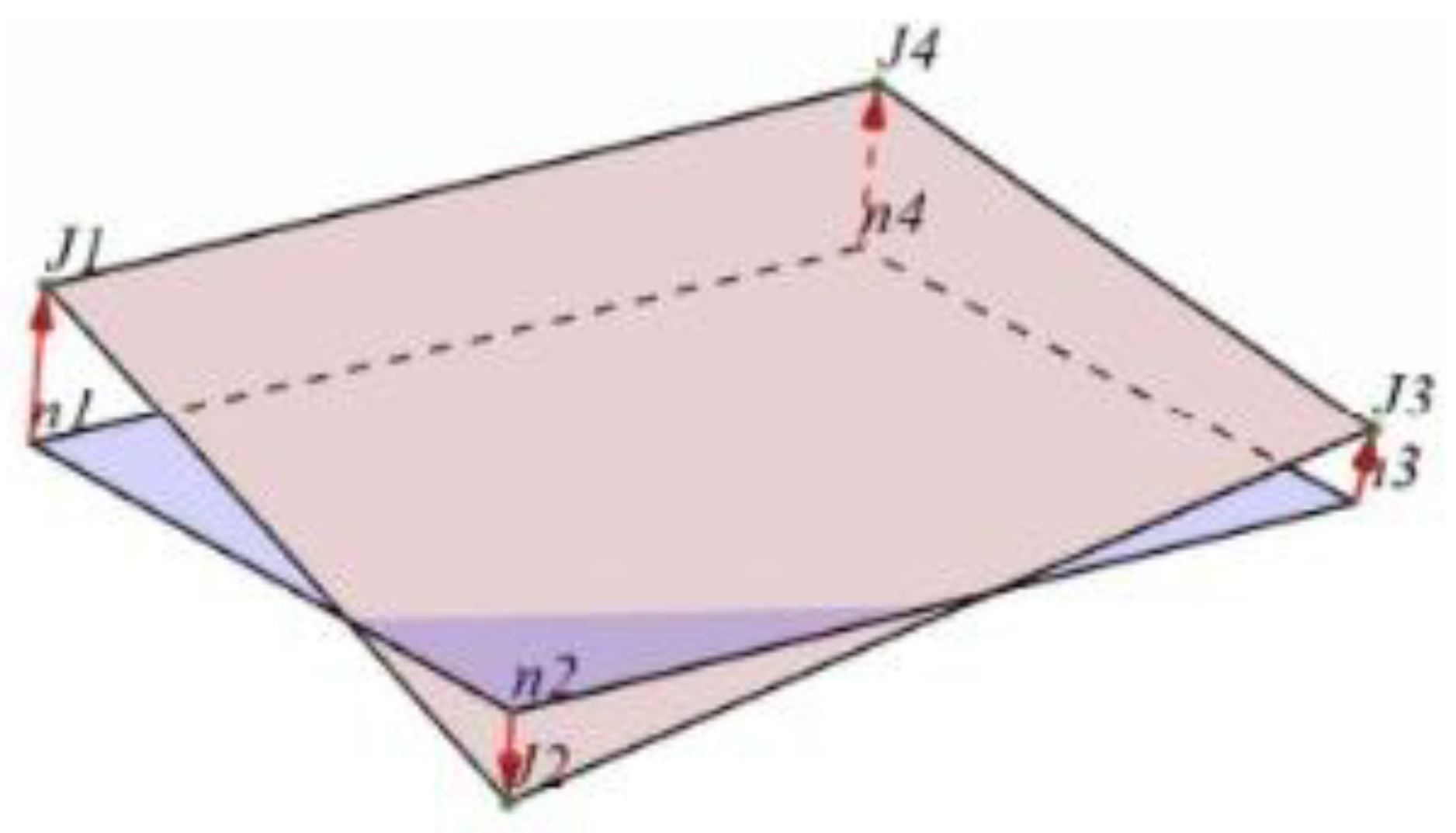

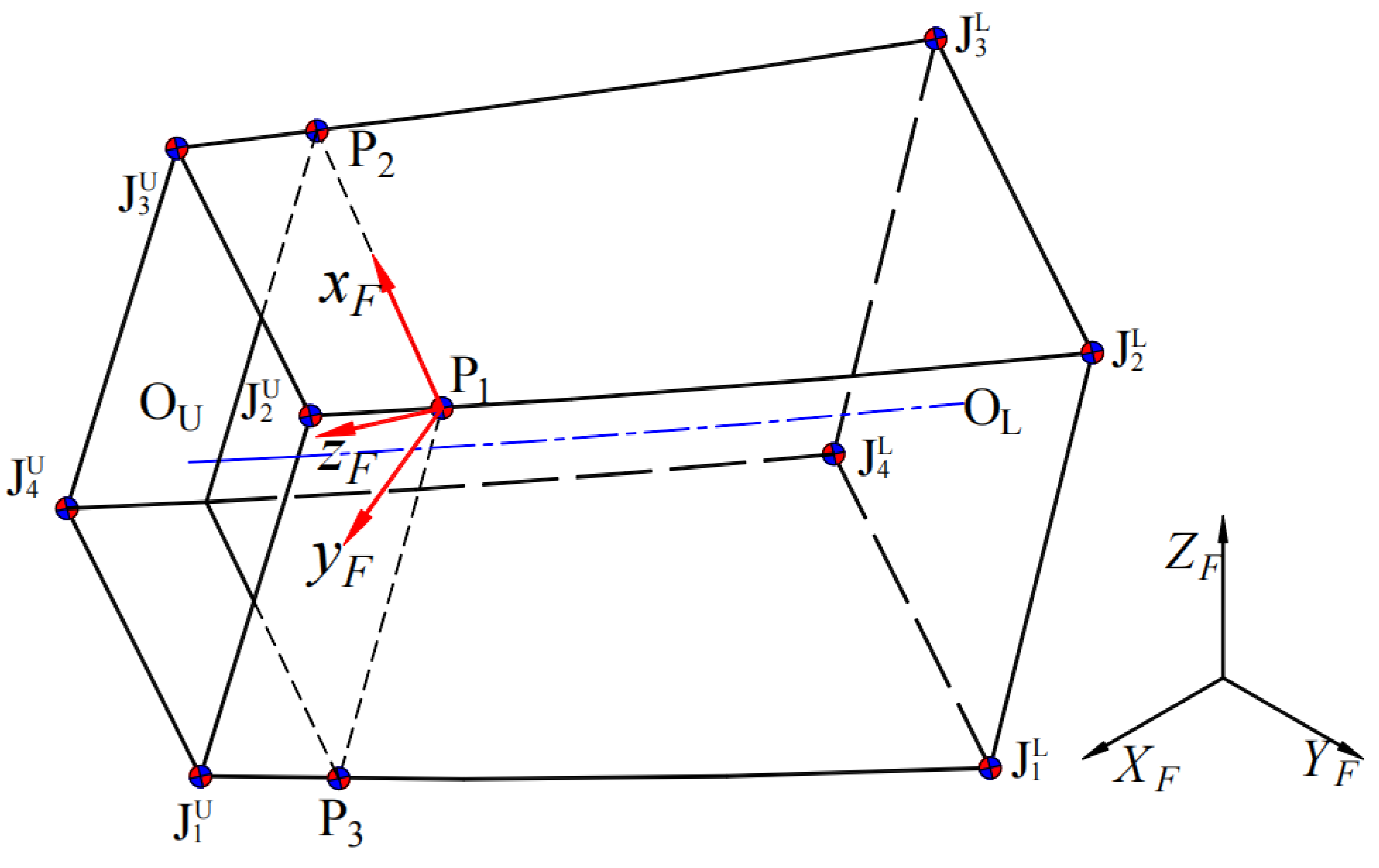
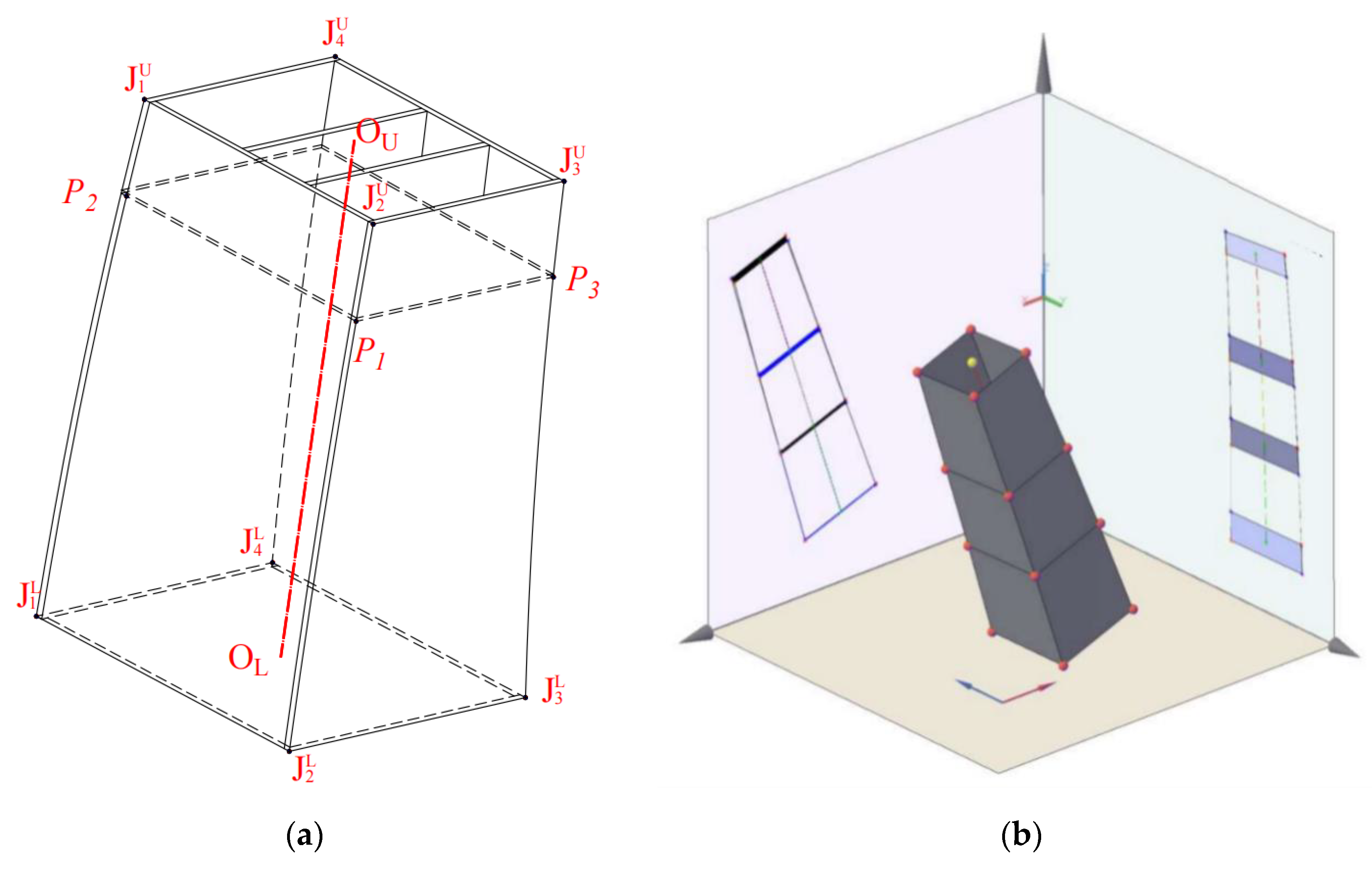
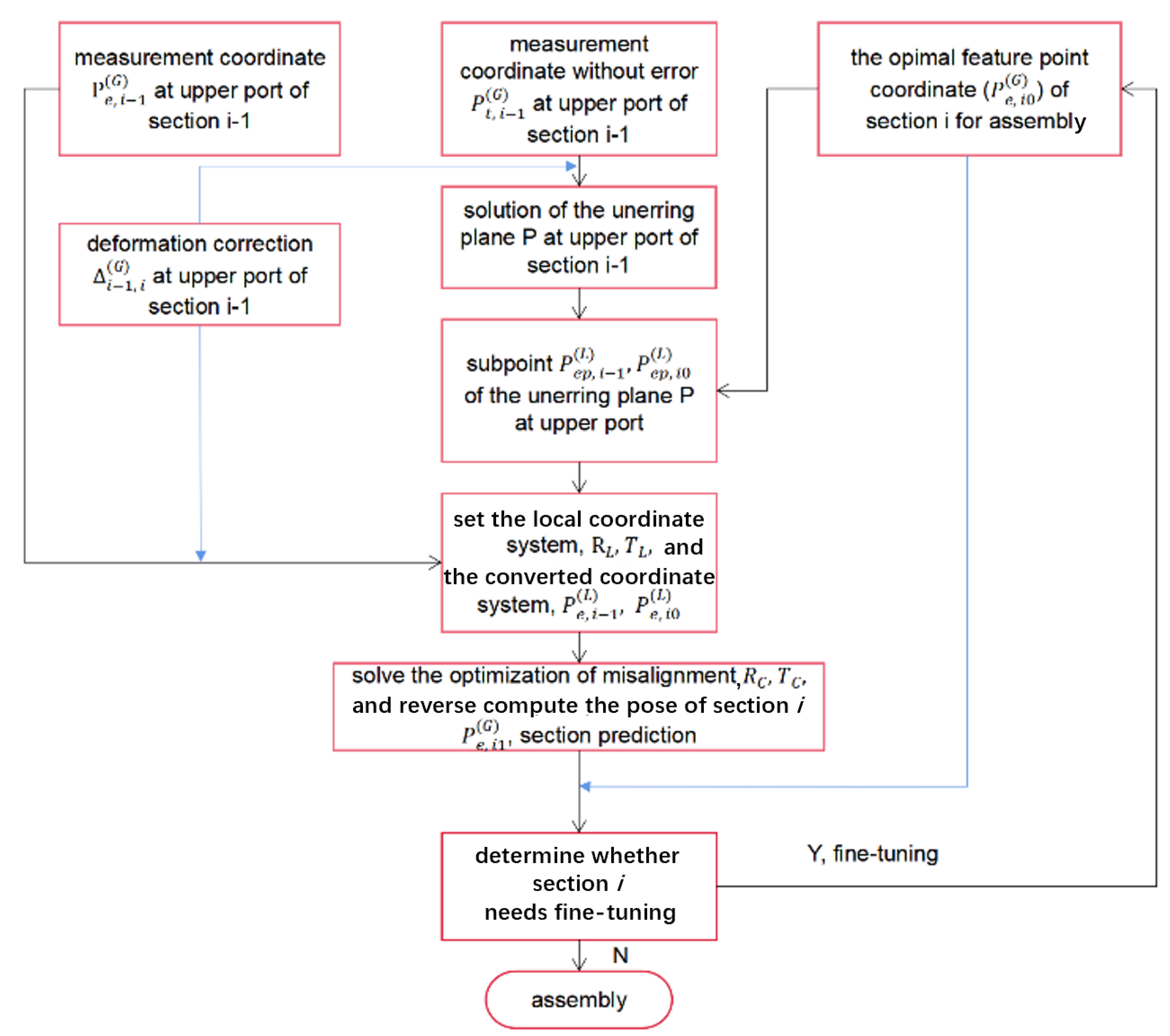

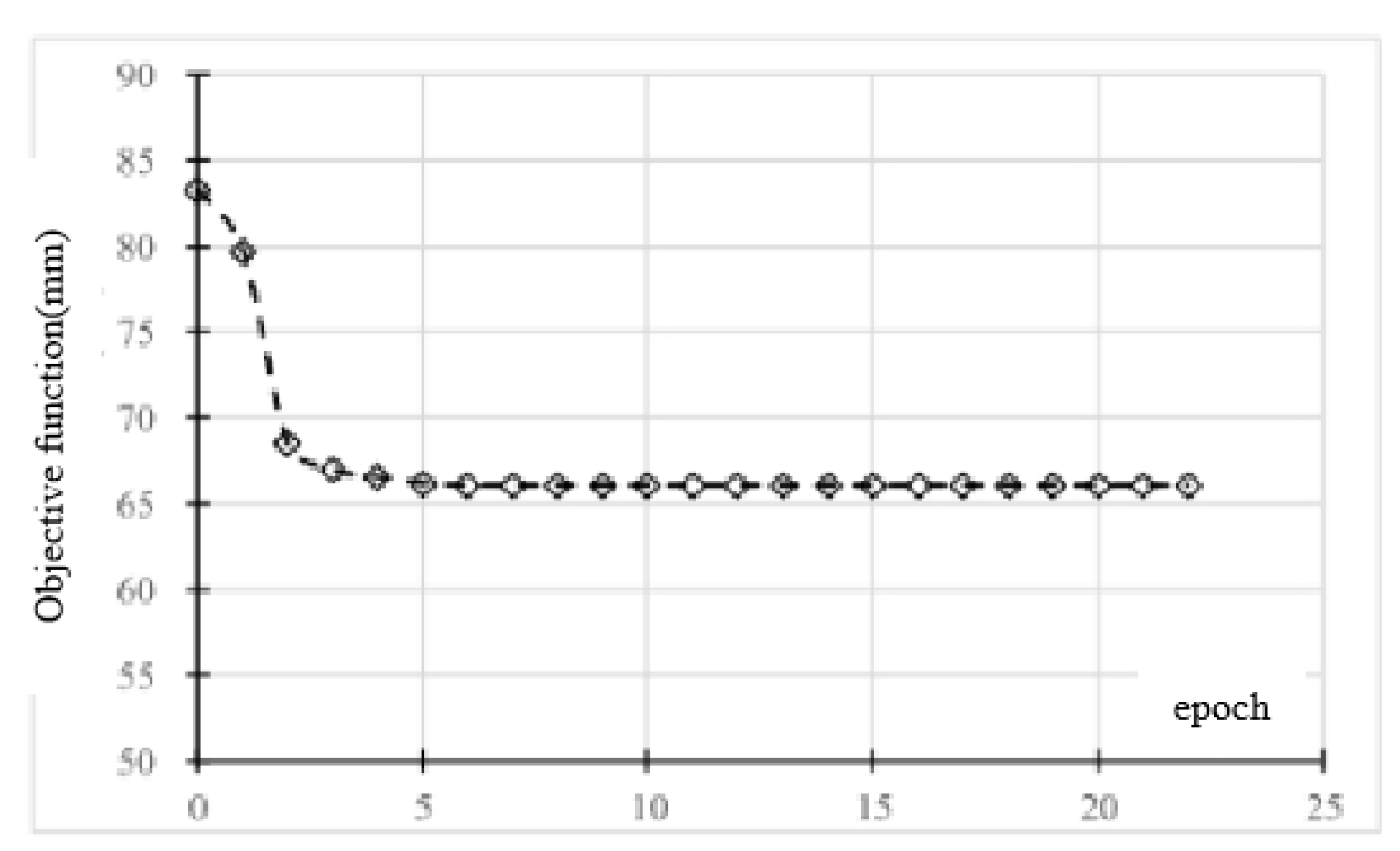

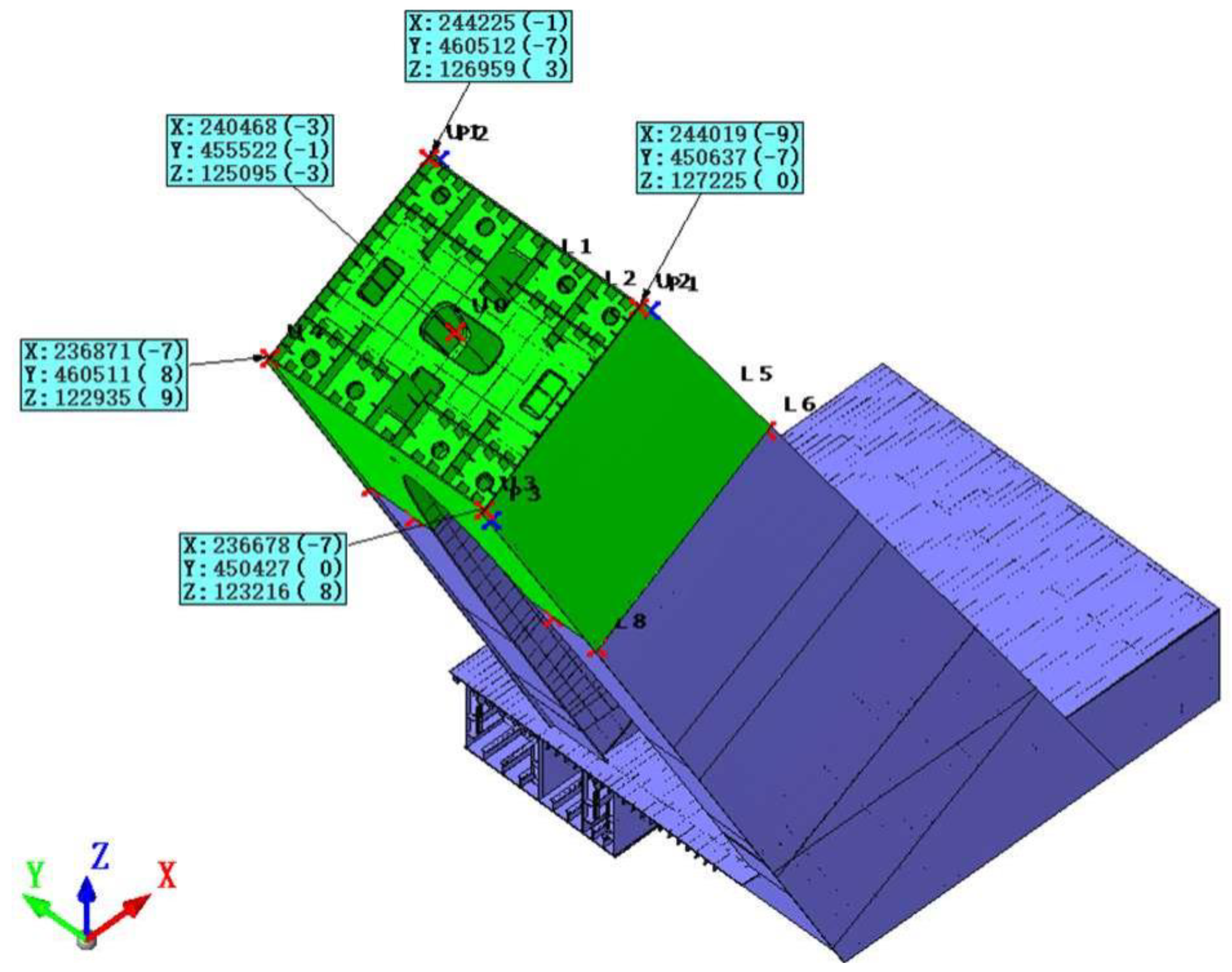
| Research Interest | Data Acquisition | Working Principle | Author |
|---|---|---|---|
| As-built BIM | Laser scanning | TOF | Tang et al. [29] |
| As-is BIM | Imaged-based techniques | Triangulation | Lu and Lee [31] |
| Cost, specifications, and applications | Laser scanning | Triangulation and TOF | Parn and Edwards [32] |
| Applications | Photos, videos and laser scanning | Triangulation and TOF | Son et al. [33] |
| Tracking and detection | Computer vision-based | Triangulation | Teizer [34] |
| Defect detection and condition assessment | Computer vision-based | Triangulation | Koch et al. [35] |
| Measuring System | Measuring Range | Maximum Permissible Error (MPE)/Measurement Uncertainty |
|---|---|---|
| Laser tracker [41] | 150 m | Distance: Angle: () |
| Laser tracer [41] | 20 m | /m |
| Total station [41] | 3 km | Distance: Angle: |
| Laser range scanner [41] | 300 m | Distance: Angle: |
| Leveling [42] | 50~200 m | Millimeter-level |
| Theodolite [43] | 1 km | |
| Close range photogrammetry [44] | 50 m | |
| UAV [45] | Camera-based | Centimeter-level |
| No. | |||||||||
|---|---|---|---|---|---|---|---|---|---|
| X | Y | Z | X | Y | Z | X | Y | Z | |
| U1 | 249,471 | 460,458 | 117,987 | −2.7 | −0.1 | −0.9 | 249,468 | 460,458 | 117,986 |
| U2 | 249,449 | 458,423 | 118,009 | −2.7 | −0.1 | −0.9 | 249,446 | 458,423 | 118,008 |
| U3 | 241,540 | 458,513 | 113,679 | −2.1 | −0.1 | −2.0 | 241,538 | 458,513 | 113,677 |
| U4 | 241,568 | 460,547 | 113,656 | −2.1 | −0.1 | −2.0 | 241,566 | 460,547 | 113,654 |
| U5 | 249,365 | 452,146 | 118,072 | −2.7 | −0.1 | −0.9 | 249,362 | 452,146 | 118,094 |
| U6 | 249,347 | 450,111 | 118,095 | −2.7 | −0.1 | −0.9 | 249,344 | 450,111 | 118,094 |
| U7 | 241,467 | 451,996 | 113,748 | −2.1 | −0.2 | −1.9 | 241,465 | 451,996 | 113,746 |
| U8 | 241,455 | 449,963 | 113775 | −2.1 | −0.2 | −2.0 | 241,453 | 449,963 | 113,773 |
| No. | |||||||||
|---|---|---|---|---|---|---|---|---|---|
| X | Y | Z | X | Y | Z | X | Y | Z | |
| U1 | 249,482 | 460,454 | 117,969 | −2.7 | −0.1 | −0.9 | 249,480 | 460,454 | 117,968 |
| U2 | 249,459 | 458,420 | 117,991 | −2.7 | −0.1 | −0.9 | 249,456 | 458,420 | 117,990 |
| U3 | 241,557 | 458,511 | 113,664 | −2.1 | −0.1 | −2.0 | 241,555 | 458,511 | 113,662 |
| U4 | 241,579 | 460,545 | 113,641 | −2.1 | −0.1 | −2.0 | 241,577 | 460,545 | 113,639 |
| U5 | 249,389 | 452,139 | 118,062 | −2.7 | −0.1 | −0.9 | 249,387 | 452,139 | 118,061 |
| U6 | 249,366 | 450,105 | 118,084 | −2.7 | −0.1 | −0.9 | 249,364 | 450,405 | 118,083 |
| U7 | 241,489 | 452,006 | 113,740 | −2.1 | −0.2 | −1.9 | 241,487 | 452,006 | 113,738 |
| U8 | 241,467 | 449,972 | 113,763 | −2.1 | −0.2 | −2.0 | 241,465 | 449,972 | 113,761 |
| No. | Distance | ||||||
|---|---|---|---|---|---|---|---|
| X | Y | Z | X | Y | Z | ||
| U1 | 249,480 | 460,454 | 117,968 | 249,480 | 460,454 | 117,968 | 0.4 |
| U2 | 249,456 | 458,420 | 117,990 | 249,456 | 458,420 | 117,990 | 0.7 |
| U3 | 241,555 | 458,511 | 113,662 | 241,555 | 458,511 | 113,662 | 0.6 |
| U4 | 241,577 | 460,545 | 113,639 | 241,577 | 460,545 | 113,639 | 0.3 |
| U5 | 249,387 | 452,139 | 118,061 | 249,387 | 452,139 | 118,061 | 0.6 |
| U6 | 249,364 | 450,105 | 118,083 | 249,364 | 450,105 | 118,083 | 0.2 |
| U7 | 241,487 | 452,006 | 113,738 | 241,487 | 452,006 | 113,738 | 0.6 |
| U8 | 241,465 | 449,972 | 113,761 | 241,465 | 449,972 | 113,761 | 0.4 |
| No. | Docking Error Variable Calculation | Normal Vector Overlap | |||||||
|---|---|---|---|---|---|---|---|---|---|
| X | Y | Z | X | Y | Z | X | Y | Z | |
| U1\L1 | 10,354 | 2 | 22 | 10,350 | 8 | −19 | −4 | 6 | −41 |
| U2\L2 | 8319 | 1 | 21 | 8316 | 11 | −8 | −2 | 10 | −28 |
| U3\L3 | 8368 | 9018 | 21 | 8368 | 9018 | 2 | 0 | 0 | −19 |
| U4\L4 | 10,403 | 9014 | 18 | 10,400 | 9024 | −11 | −3 | 10 | −30 |
| U5\L5 | 2041 | 17 | 21 | 2023 | 8 | −7 | −7 | −9 | −28 |
| U6\L6 | 6 | 12 | 19 | 3 | 8 | 0 | −2 | −4 | −19 |
| U7\L7 | 1850 | 9020 | 18 | 1859 | 9011 | −3 | 9 | −8 | −21 |
| U8\L8 | −183 | 9008 | 16 | −174 | 9011 | −8 | 9 | 3 | −24 |
| No. | Variation | ||||||||
|---|---|---|---|---|---|---|---|---|---|
| X | Y | Z | X | Y | Z | X | Y | Z | |
| U1 | 244,223 | 460,509 | 126,967 | 244,214 | 460,512 | 126,962 | −9 | 3 | −5 |
| U2 | 244,014 | 450,638 | 127,235 | 244,009 | 450,641 | 127,232 | −5 | 3 | −3 |
| U3 | 236,676 | 450,420 | 123,222 | 236,671 | 450,420 | 123,219 | −5 | 0 | −3 |
| U4 | 236,867 | 460,516 | 122,941 | 236,858 | 460,516 | 122,936 | −9 | 0 | −5 |
| UO | 240,468 | 455,522 | 125,095 | 240,461 | 455,523 | 125,091 | −7 | 1 | −4 |
| P2 | 244,688 | 460,482 | 126,557 | 244,679 | 460,485 | 126,552 | |||
| P1 | 244,473 | 450,565 | 126,815 | 244,468 | 450,568 | 126,812 | |||
| P3 | 236,916 | 450,301 | 122,679 | 236,911 | 450,301 | 122,676 | |||
| Limbs | Bias | GTN 3 | GTN 4–6 | GTN 5–7 | GTN 8 | GTN 9 | GTN 10 | GTN 11 | GTN 12 | GTN 13 | GTN 14 | GTN 15 |
|---|---|---|---|---|---|---|---|---|---|---|---|---|
| North | 3 | −5 | −6 | −5 | 12 | 4 | −9 | 5 | −18 | 2 | −18 | |
| 3 | −3 | −4 | −2 | 3 | −8 | −5 | −4 | −9 | 3 | −4 | ||
| South | 3 | −8 | −10 | −6 | −12 | −2 | −15 | −18 | −12 | 3 | −12 | |
| 2 | 3 | −4 | −10 | −3 | −6 | −7 | −4 | −8 | 4 | −8 | ||
| Allowance | 3 | 5 | 7 | 10 | 12 | 15 | 18 | 21 | 24 | 27 | 30 | |
Disclaimer/Publisher’s Note: The statements, opinions and data contained in all publications are solely those of the individual author(s) and contributor(s) and not of MDPI and/or the editor(s). MDPI and/or the editor(s) disclaim responsibility for any injury to people or property resulting from any ideas, methods, instructions or products referred to in the content. |
© 2023 by the authors. Licensee MDPI, Basel, Switzerland. This article is an open access article distributed under the terms and conditions of the Creative Commons Attribution (CC BY) license (https://creativecommons.org/licenses/by/4.0/).
Share and Cite
Li, J.; Li, Q.; Mao, Q.; Xu, H. Digital-Twin-Based High-Precision Assembly of a Steel Bridge Tower. Buildings 2023, 13, 257. https://doi.org/10.3390/buildings13010257
Li J, Li Q, Mao Q, Xu H. Digital-Twin-Based High-Precision Assembly of a Steel Bridge Tower. Buildings. 2023; 13(1):257. https://doi.org/10.3390/buildings13010257
Chicago/Turabian StyleLi, Jiulin, Qingquan Li, Qingzhou Mao, and Hao Xu. 2023. "Digital-Twin-Based High-Precision Assembly of a Steel Bridge Tower" Buildings 13, no. 1: 257. https://doi.org/10.3390/buildings13010257
APA StyleLi, J., Li, Q., Mao, Q., & Xu, H. (2023). Digital-Twin-Based High-Precision Assembly of a Steel Bridge Tower. Buildings, 13(1), 257. https://doi.org/10.3390/buildings13010257






